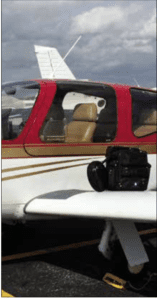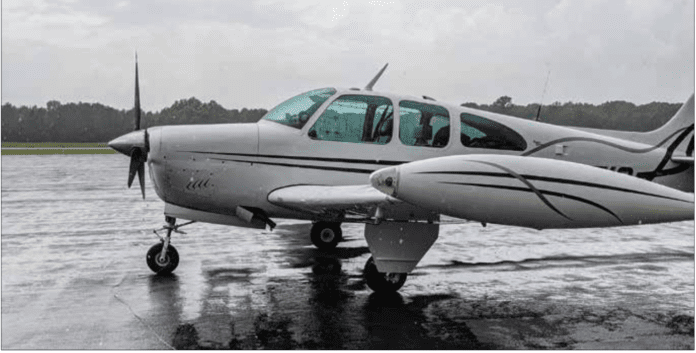I am having a bit of a bad-luck streak. For those who are not aware, the last flight of a trip is fondly called the “go-home” leg, and it is absolutely cursed. You could be having the perfect rotation, avoiding delays, mechanical issues and weather for days with minimal fuss. All of a sudden, it is your go-home leg and that is when Murphy’s Law really takes over. In my case, low staffing levels for New York’s ATC facilities was one culprit; thunderstorms were another.
In the first case, ATC made things pretty simple for us: They called and told us that New York Center was no longer taking arrivals and we should divert. The following week, we had a more classic (and challenging) scenario. The weather was stubborn and we were told to hold with no end in sight. Now we had to calculate how much fuel we could afford to burn in the hold on top of all the additional steps required to divert. In the end, we hit our minimum fuel and diverted to a nearby airport, hoping for a quick gas and go. But we timed out and had to spend the night. That was my first time a go-home leg actually took two days. There was a silver lining, though: Both situations gave me the inspiration for this article.
Of course, several factors can increase the risk of diversion. Some of the most common causes for in-flight diversions I’ve encountered follow, along with some mitigation strategies you can take before even leaving the ground.
Weather
I do not have an exact log of all of the times I have had to divert in flight, but my best guess is that 80 percent of the time, my diversions are caused by weather. Thunderstorms, low visibility, winter weather…every season presents its own unique threats and challenges. If any of these conditions exist along the route of your flight, the first step in mitigation is a thorough weather briefing. Sometimes a second set of eyes, i.e., a weather briefer or another pilot, can add a useful perspective. Tunnel vision or continuation bias can lead down a path of bad decisions, and having someone else point that out can break the chain. Additionally, having a backup plan or three can allow for a safe departure with solid options in case the weather takes a turn.
For example, consider a line of thunderstorms 20 miles north of your destination. The forecast calls for a chance of storms, but you feel the weather will not hit the airport. There is a suitable airport along your route, further away from the storm. Getting the weather and Notams for that airport is a great strategy for mitigating the thunderstorm threat. That way, if the storms do pop up, you are prepared to land closer to your final destination and it will be far less stressful. Bonus points if the airport has a restaurant where you can enjoy a meal while you wait out the weather, or rental cars if you don’t want to.
Adding fuel or a fuel stop is another way to mitigate weather diversion threats. There are few feelings worse than not having a usable destination while watching fuel numbers dwindle to uncomfortable levels. I think of fuel planning as similar to a preflight restroom stop. I have regretted not adding extra fuel, but never once have I regretted adjusting my plan to add some fuel for breathing room.
Let’s do a quick review of the legal stuff, just a refresher in case it has been a minute since anyone asked you.
First, of course, there is no legal requirement to file an alternate airport under VFR. My favorite method of VFR alternate planning is looking out the window, finding airports on the ground and looking them up on the EFB. There’s also the “nearest” button on your GPS navigator. It keeps me busy and provides a bulk of knowledge should something go awry. Meanwhile, here’s the quick scoop for IFR (FARs 91.167 and 91.169).
Is An Alternate Required Under IFR?
You always need to file an alternate airport on your IFR flight plan unless:
• The destination has an instrument approach
AND
• For at least one hour before and for one hour after your estimated time of arrival, the ceiling will be at least 2000 feet above the airport elevation and the visibility will be at least three statute miles.
What’s a Legal Alternate?
To be a legal alternate, the forecast weather at the ETA must be at or above:
• For airports with a precision approach, 600-foot ceilings and two miles’ visibility;
• For airports with non-precision approaches, 800-foot ceilings and two miles;
• For airports with no published instrument approach, the ceiling and visibility must allow for a descent under VMC from the MEA to approach and landing.
Mechanicals
Mechanical failures tend to disguise themselves a lot better than weather. For a myriad of reasons, a thorough preflight walk-around and run-up is the best mitigation strategy. I have often heard of pilots sensing a small anomaly and disregarding it, especially if it was something intermittent.
In general, mechanical emergencies are usually defined by time. Something catastrophic, like an engine failure or flight control failure, require immediate intervention, and most would consider them requiring a forced landing rather than a diversion. Often the most challenging emergencies are somewhere in the middle, where a partial engine failure leads to waffling decisions about a suitable landing point.
A classic example of this is the Boutique Air PC-12 crash. The pilot experienced a loss of thrust and elected to divert. Engine power briefly returned, leading the pilot to change their divert airport to something further away but more convenient for operational reasons. On the way, the engine degraded and the flight landed off-airport, only a few miles short of pavement.
As a general rule, when you make the decision to divert, it’s probably a good instinct. Once your plan is in place and you are heading to a suitable airport, the workload is already high. No need to add to your plate by trying to tweak a plan to perfection. The suitability of the airport depends on the nature of the failure. Flap or gear issues that do not affect aircraft controllability may warrant delaying landing to find a nice long runway and will burn extra fuel for good measure. Some manufacturers define the urgency in their abnormal/emergency checklists by saying “land as soon as practicable” instead of “land as soon as possible.” Manufacturers may define these differently, but something that stuck with me was when a mentor told me the following: “Land as soon as practicable means look for somewhere safe, convenient and smart. The plane is not going to break you, so do not break it. Land as soon as possible means finding the nearest piece of pavement that poses less of a threat than the bind you are currently in.”
Airport Issues
There is no real shame in it—we all shut airports down here and there. Whether it is a blown tire or a wildlife strike, depending on the severity of the issue, it can take hours for the runway to reopen. Similar to weather, you may be left in a holding pattern with little or no information on how much longer it may be. Not much you can do as far as preflight planning, except to consider this elevated risk when flying to an airport with just one runway. The best way to mitigate this in-flight is to start considering a diversion as soon as you are aware of the issue and be ready to make a pit stop if it comes to it.

When I was first renting Skyhawks, I was somewhat of a light traveler. If pressed, I would admit I was probably ill-prepared. In my flight bag, I had exactly what I needed for a safe flight…and nothing else. In light of this diversion discussion, here are some items I’ve wish I had when I’ve diverted.
Credit Card
I used to bring my wallet, with a debit card and a blank check to cover whatever the aircraft rental cost. If I ever needed a rental car or hotel room, I would have been up a creek. Additionally, debit cards more often get flagged for suspicious transactions, like several three-figure fuel charges at small airports far from your home.
Snacks and water
Someone once told me that in aviation, you eat and sleep when you get the chance, because you never know when the opportunity will arise again. Diverting to a remote airport may leave you stranded without food or water for awhile, and it pays to have something with you just in case.
Overnight Preparedness
Here is a bad one. I once got stuck out on an island, when the clear-weather forecast ended about six hours too early. Luckily, I had a place to stay, but my contact lenses ended up on life support after leaving them in all night. Now, I bring a small bag of essentials for an unexpected RON (remain overnight). Very minimalist, but anytime I fly far enough I cannot easily drive home, I make sure I am ready for anything.
Choices, Choices
Much of diverting involves cockpit resource management (CRM). Perhaps especially if you are flying single-pilot, any and all resources available should be utilized to increase your situational awareness. Expanding your team to include FSS or ATC can provide current weather and Notams, and help you make an informed decision. I find many pilots in flight reviews are not comfortable contacting FSS. This may be a topic for another article, but the sidebar in Jim Wolper’s article on page 12 is a good start. If you are unfamiliar with how to access Flight Service while airborne, ask your CFI or mentor.
Of course, there are more modern ways to make informed diversion decisions. If your EFB or aircraft is Nexrad capable, there is often the ability to check more current airport information that may have changed since your departure. This can create another hazard, where there is so much information available it can trigger analysis paralysis. The requirement to assess information, make decisions and manage the aircraft simultaneously is part of what makes diverting such a high-workload event.
Long story short, when a situation arises that may warrant a diversion, ask yourself one question. How much time do I have? If there is no risk of burning a little extra gas while working on a neat and tidy diversion plan, that is beautiful. Take a sip of coffee and get to work.
If the answer is that you need to be on the ground immediately, turn toward a landing spot that will pose less of a hazard than remaining in the aircraft for the duration of the time it takes to get there. Remember the basics—aviate, navigate, communicate—and never be afraid to ask for help.
Although it’s a slogan for helicopter safety written by the Helicopter Association International, whose members don’t need a runway, I think it applies to all operators: “Land it and live.” You will be happy you did.
After a career as a Part 135 pilot, flight instructor and check airman, Ryan Motte recently got hired by a major airline and is now flying as a Part 121 first officer.




